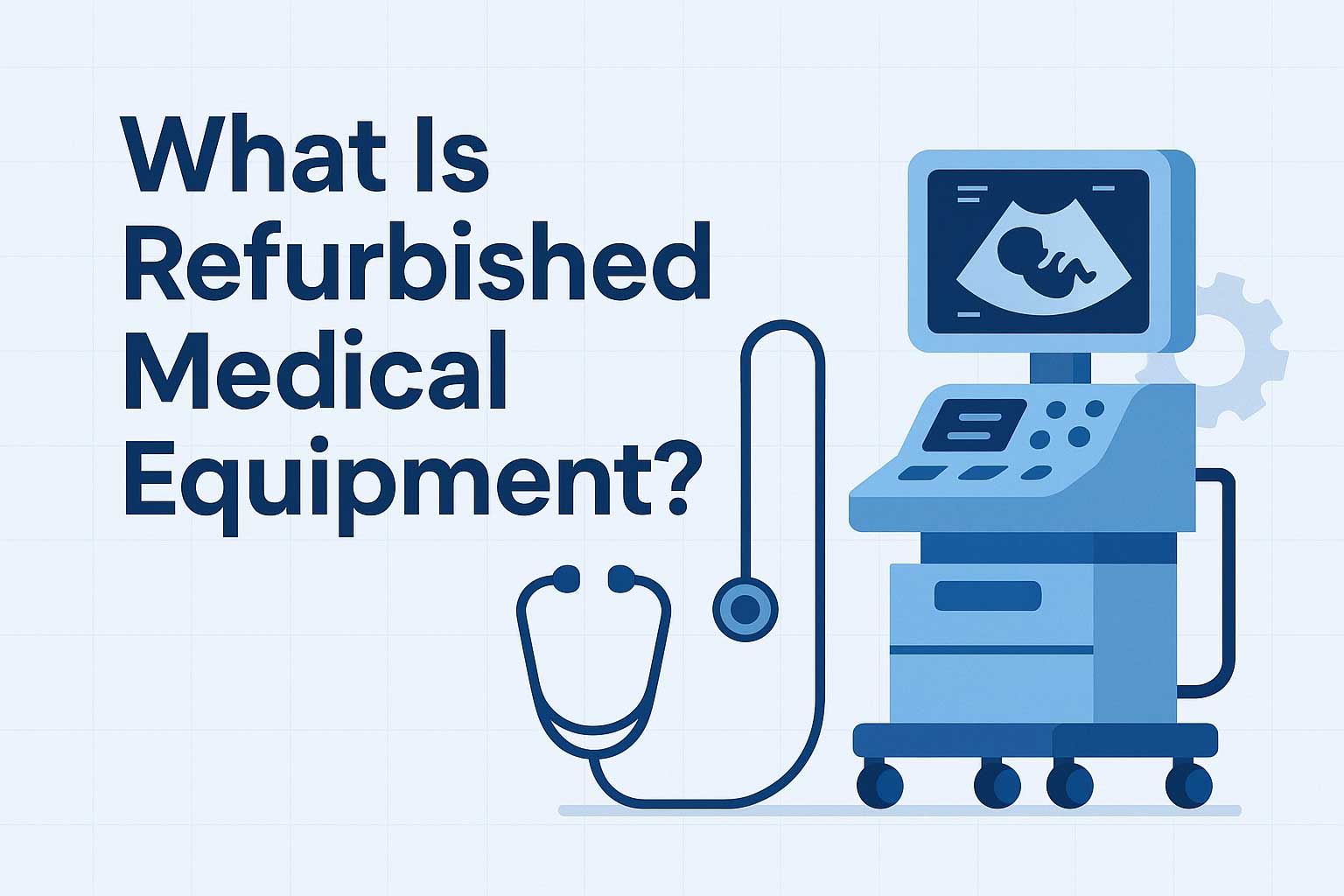
Refurbished vs. Used: What's the Difference?
In the healthcare world, acquiring reliable equipment without breaking the bank is a major concern. This is where refurbished medical equipment becomes a valuable solution. But what exactly does ”refurbished” mean in the medical field, and how is it different from “used”? This article will explore the definition, benefits, and important considerations of refurbished medical equipment for hospitals, clinics, and private practices.
Refurbished vs. Used: What's the Difference?
Many people mistakenly assume that refurbished and used medical equipment are the same. However, there's a significant difference:
- Used Equipment: Sold in its current condition, often with minimal inspection or servicing.
- Refurbished Equipment: Professionally restored to meet original manufacturer specifications. This includes thorough cleaning, part replacement, recalibration, testing, and certification. Often sold with a warranty.
Refurbishment bridges the gap between affordability and reliability.
How Is Medical Equipment Refurbished?
The refurbishing process can vary between providers but generally follows these steps:
- Initial Evaluation: Devices are inspected for wear, damage, or malfunction.
- Disassembly & Cleaning: Equipment is taken apart and sterilized inside and out.
- Repair & Component Replacement: Any defective parts are replaced with OEM or equivalent-grade parts.
- Recalibration: Devices are recalibrated to ensure accuracy and regulatory compliance.
- Cosmetic Refinishing: Exterior components are repaired or repainted to restore appearance.
- Quality Assurance Testing: Final testing is performed to confirm the device meets performance standards.
- Documentation & Certification: Includes manuals, warranty info, and performance verification.
Why Choose Refurbished Medical Equipment?
1. Cost Efficiency
Refurbished equipment typically costs 40–60% less than new models — allowing healthcare providers to invest in more or better equipment within budget.
2. Reliability & Warranty
Unlike used equipment, refurbished devices often come with warranties, service plans, and detailed performance verification reports.
3. Faster Availability
New medical equipment can take weeks or months to be delivered. Refurbished units are usually in stock and ready to ship.
4. Eco-Friendly Choice
Buying refurbished helps reduce electronic waste and conserves valuable resources by extending the lifecycle of functional equipment.
Common Types of Refurbished Medical Equipment
Nearly any non-consumable medical device can be refurbished. Common examples include:
- Ultrasound systems
- Patient monitors
- Defibrillators and ECG machines
- X-ray and imaging devices
- Surgical tables and lighting systems
- Autoclaves and sterilizers
- Infusion pumps
What to Look for When Buying Refurbished
To ensure you’re getting high-quality refurbished equipment, consider the following tips:
- Vendor Certification: Work with reputable refurbishers who follow ISO 13485 or FDA-compliant processes.
- Detailed Documentation: Request refurbishing reports, warranty terms, and service history.
- Compatibility: Ensure the equipment integrates well with your existing systems.
- Post-sale Support: Look for suppliers that offer maintenance, calibration, and customer support.
- Regulatory Compliance: Check if the product is compliant with your local regulations (FDA, CE, BPOM, etc.).
Who Should Consider Buying Refurbished?
Refurbished equipment is ideal for:
- New clinics and practices looking to stretch budgets
- Rural hospitals and mobile medical units
- Veterinary and dental practices
- Medical educators and simulation labs
Even large hospitals use refurbished systems as backups or for departments with lower usage frequency.
Conclusion
Refurbished medical equipment is more than just a budget option — it’s a strategic investment in operational efficiency and sustainability. By understanding what refurbishment entails and partnering with reliable suppliers, healthcare providers can acquire high-performance, compliant devices without the premium price of brand-new systems.
